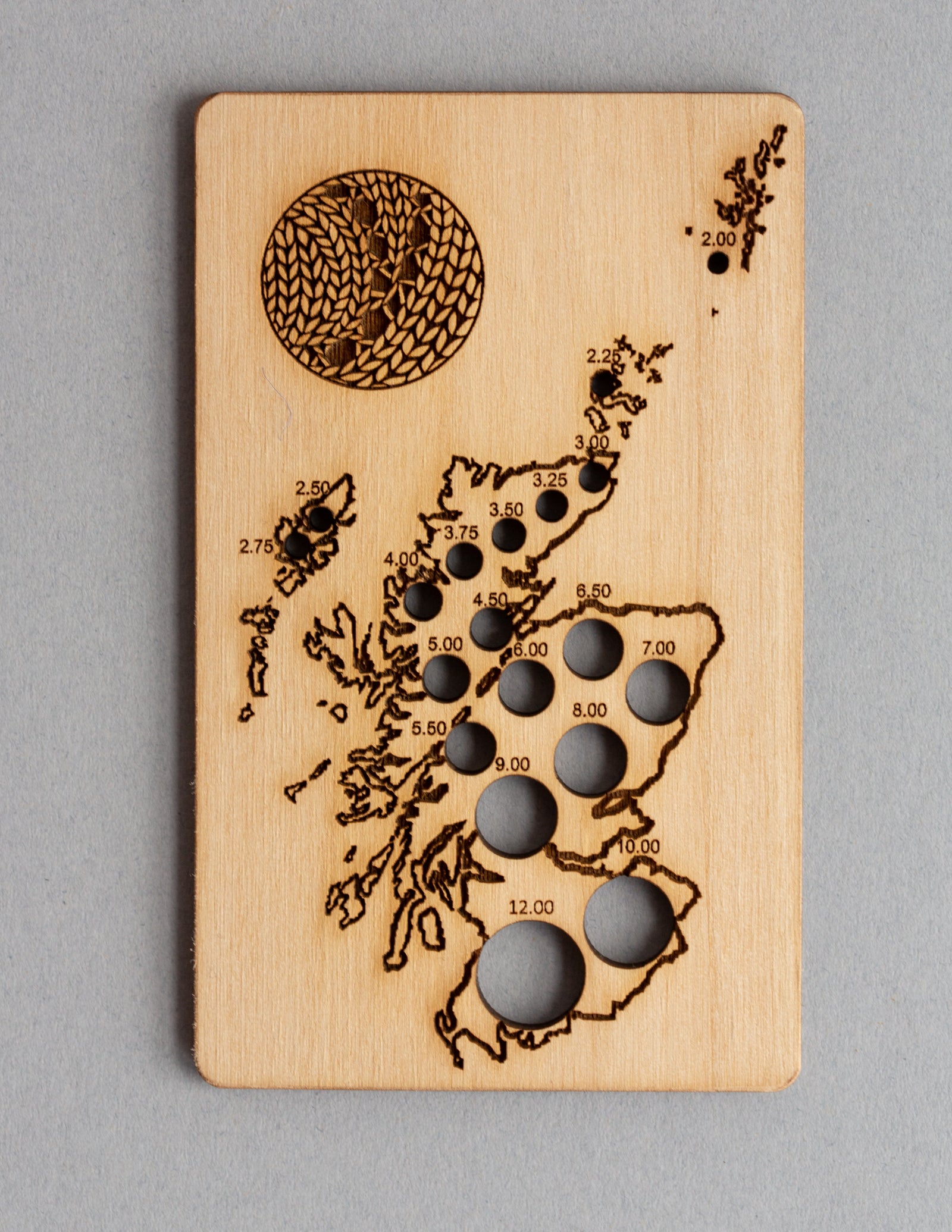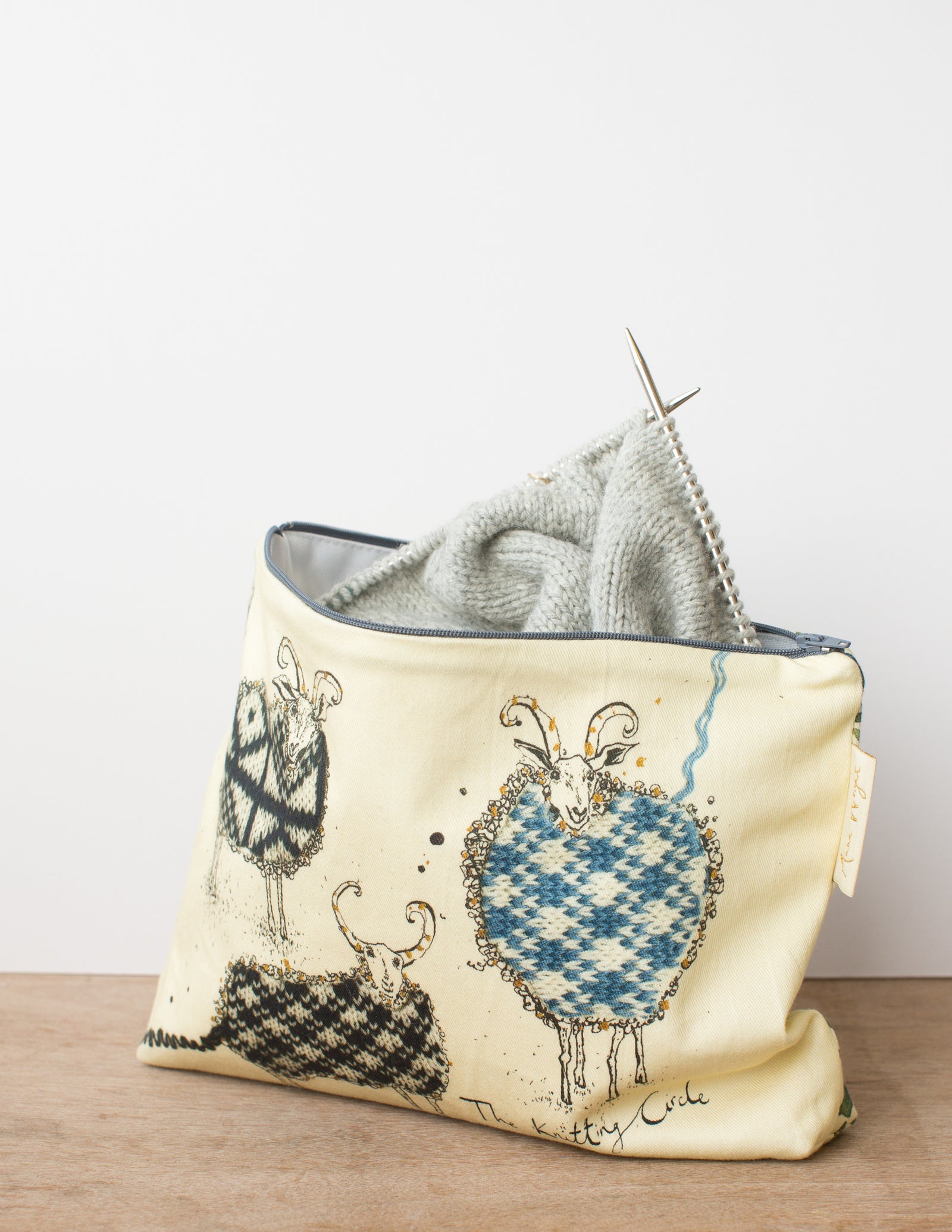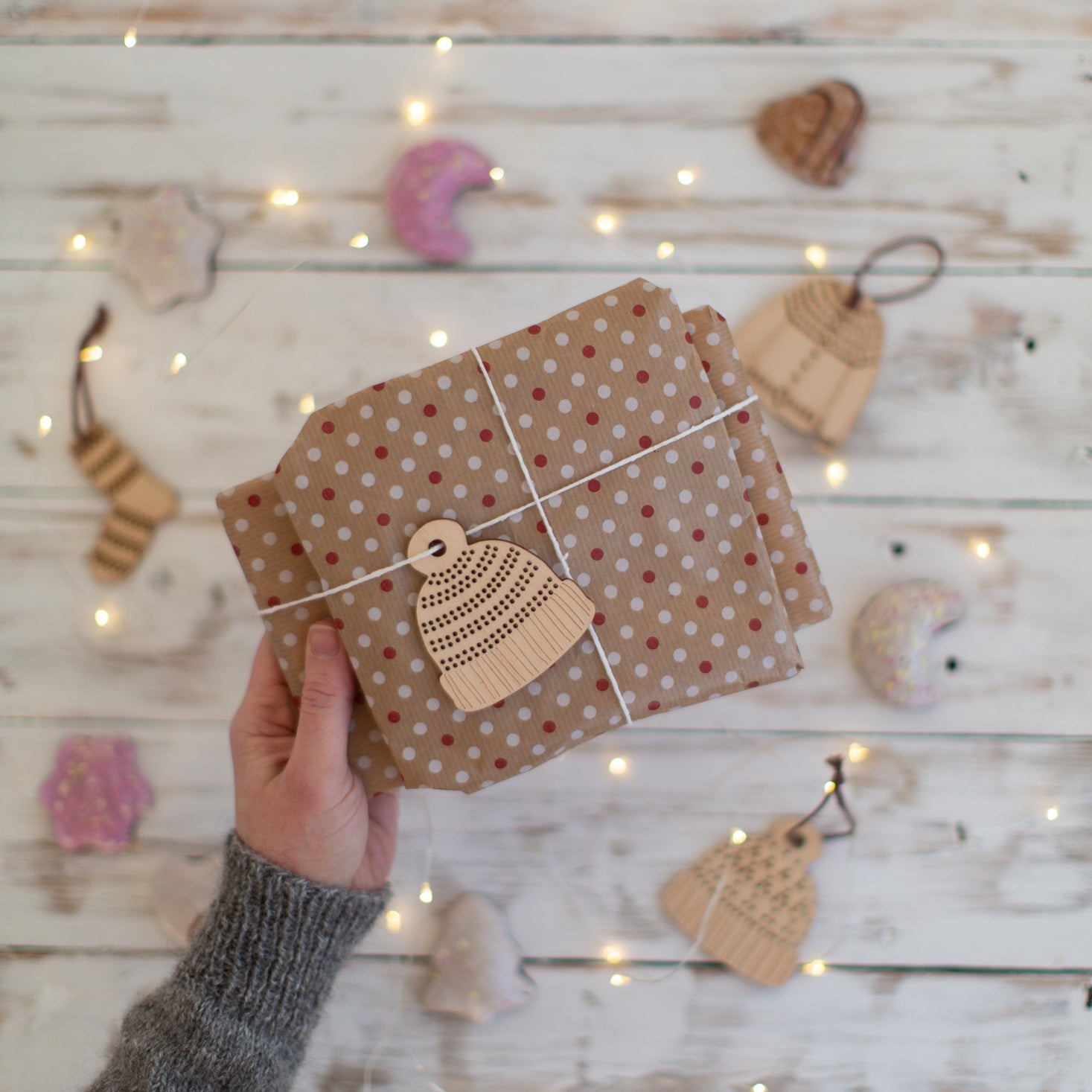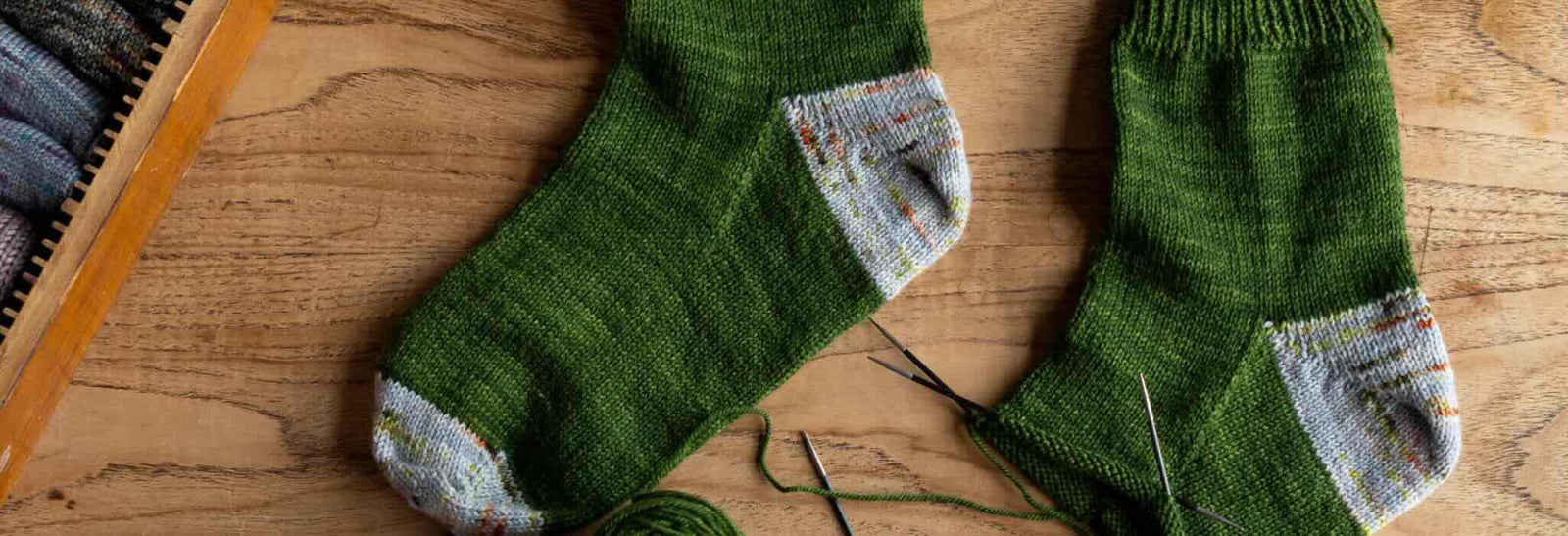Patterns
Kits
sundries
knitting tools, buttons and notions, project bags and other pleasing little things
knitting tools, buttons and notions, project bags and other pleasing little things

Exclusive Scotland needle gauge by Katrinkles

Zippered pouches in two sizes by our studio neighbour Anna Wright

keep small tools accessible with the Maker's Keep
gift 2019
Subscribe to our Colourwork Club for a gift that lasts well into the new year. Your recipient will receive a new colourwork kit in Janurary, February and March

Subscribe to our Colourwork Club for a gift that lasts well into the new year. Your recipient will receive a new colourwork kit in Janurary, February and March


Last minute shopping? Gift cards are delivered electronically - forward the email or print it for your recipient. A range of amounts are available and gift cards don't expire.


Learn to knit: the long tail cast-on
February 03, 2022
The Long Tail Cast-on method is a classic knitting technique that’s known for its speed and stretchiness. It's one of the most popular ways to teach new knitter's to cast on, and for good reason!
This method uses a long tail of yarn along with one needle and your hand to establish the stitches that you’ll knit from. The Long Tail Cast-on is structurally identical to a backwards loop cast on plus a row of knitting, making it sturdier and less prone to stretch out as you knit than a simple loop cast on. You can use the Long Tail Cast-on for just about any knitting project. If you’re just learning how to cast on and knit, the Long-tail cast on is an indispensable skill for your toolkit!
The long tail cast-on is worked onto one needle. If you're using circular needles hold one tip in the right hand and let the other dangle.
Video
Step-by-step tutorial
Set up for Long Tail Cast-on
Pull a length of yarn from the ball.

Getting just the right length of tail can be tricky, but it’s better to have more yarn than not enough! To estimate the yarn tail length, measure out about 1" / 2.5cm per cast-on stitch in worsted weight yarn. You’ll need a little less in thinner yarns, a little more in chunkier yarns. An alternative rule of thumb is to use 3 times the width of the project you're casting on for, plus about 6" / 15cm extra.

Make a slipknot and place it on the right-hand needle (easier for beginners) OR lay the yarn over the right needle without a slipknot.

The ball end of the yarn should be away from you and the tail end closer to you.
Holding the needle in your right hand, use your left hand to grasp the two tails hanging from the needle. Insert your left index finger and thumb between the tails.


Open your index finger and thumb, letting the yarn slide down onto your thumb and finger to create the “slingshot” or a V shape. You’ll return to this hand and yarn position after each cast-on stitch.

Cast on with Long Tail Cast-on method
Step 1. Bring the right needle tip slightly towards you, then insert it into the left thumb loop from below.


Step 2. Grab the strand from your index finger with the right needle, from right to left.


Step 3. Draw the index finger strand down through the loop on your left thumb.

Step 4. Release the yarn from your left thumb.

Step 5. Use your thumb to tighten up the stitch and return to the slingshot position.

Repeat steps 1–6 to continue the Long Tail Cast-on until all of your stitches have been cast on.

Learning how to cast on for knitting is one of the very first things you learn as a knitter, and the Long Tail Cast-on is a versatile and easy method that’s perfect for hats, shawls and sweaters.
Tips:
- Avoid pulling the yarn too tight when casting on so the bottom edge of your project doesn't pull in and pucker. Make sure your stitches can move smoothly and easily on the needle, and aim for about a needle's width of space between each cast-on stitch.
- For a very stretchy cast-on space the stitches further apart.
- For looser stitches that are easier to knit into on the next row, try casting on with a larger needle, or both of your needles held together.
Also in Journal

Deep Shadow Heel Tutorial
September 25, 2025

20 Years of Ysolda Knitting Patterns: Part 2
June 23, 2025

20 Years of Ysolda Knitting Patterns: Part 1
June 19, 2025
Recent Articles
-
Deep Shadow Heel Tutorial
September 25, 2025
-
20 Years of Ysolda Knitting Patterns: Part 2
June 23, 2025
-
20 Years of Ysolda Knitting Patterns: Part 1
June 19, 2025
-
Learn to Knit: Mattress Stitch
March 29, 2023
-
How to Knit a Scarf: A Beginners Guide to Scarf Knitting
March 23, 2023
-
Learn to knit: the long tail cast-on
February 03, 2022
-
How to Graft Your Knitting
December 09, 2021
-
Crochet Provisional Cast-on
December 02, 2021
-
Learn to knit: How to knit in the round with double pointed needles
November 25, 2021
-
Learn to knit: How to knit in the round using the magic loop technique
November 25, 2021
Free resources
-
KALS, step-by-step pattern guides and free patterns
Learn brioche with the free Daniel's Hat pattern
Tombreck - a free chevron beanie pattern
Working the brioche neck detail on the Polwarth sweater
Installing a zipper and ribbon, finishing wee Carson
Yarn colour ideas for Threipmuir sweater
Additional colourways for the Joy mitts (choose your pride flag)
How to join the shoulders on Wardie
How to join the pockets on Granton and Wardie
Finishing Resources for Granton
Broughton mittens tutorial part 1
Broughton mittens tutorial part 2
Broughton mittens tutorial part 3
Basics
Casting on
Decorative Channel Island Cast-on
Binding off
3 Easy Stretchy Bind-offs (p2tog bind-off; k2togtbl, k1 bind-off; Jeny's surprisingly stretchy bind-off)
Tubular Bind-off for brioche stitch
Increasing
Paired increase methods compared
How to continue in pattern while increasing and decreasing
Decreasing
Brioche stitch double decreases
Knitting in the round
How to Knit in the round using Magic Loop
How to Knit in the round using DPNs
Short rows
Swatching and gauge
Tips and tricks
Avoiding ears when binding off
Tighter purl stitches for neater cables and ribbing
Cabling without a cable needle
How to knit more symmetrical yarn overs
Bust darts in sweaters with all over stitch patterns
A magic formula for evenly distributing shaping
Superwash v Non-Superwash Wool
Picking up sts from the middle of the fabric
Reading knitting patterns
Understanding "continue in pattern"
Help! Where am I in my knitting project?
Using charts, even if you hate them
Finishing
Garment knitting
Joining the body and sleeves on a seamless bottom up sweater
Sizing
Ysolda’s sizing chart for knitwear designers
Inclusive garment knitting
How to pick a garment without a model for you (specifically addresses finding garment patterns when your gender identity isn't represented and the styles you want to knit might not be sized to fit your body)
How does ease affect inclusive size ranges?
Specific stitch patterns
Lace
Identifying and fixing mistakes in lace knitting
Colourwork
Getting started with stranded colourwork
Understanding colour dominance
Working stranded colourwork over small circumferences
Decreases in stranded colourwork
Holding the yarn for stranded colourwork
Ladderback Jacquard (a neat way to deal with long floats)
Cables
Cabling without a cable needle
Cabling without a cable needle on the wrong side
How to knit cabled decreases
Closed ring cable increases and decreasesBrioche
How to work brioche stitch in the round
Other crafts
Cross stitch
How to begin your first large cross stitch project
How to finish a cross stitch project with an embroidery hoop frame
Mending

Sign up today
Find out the latest news from the studio such as sales, pattern releases, and new workshops or KALs our learning community, The Knitwork. We also share helpful tips and exclusive subscriber discounts...



